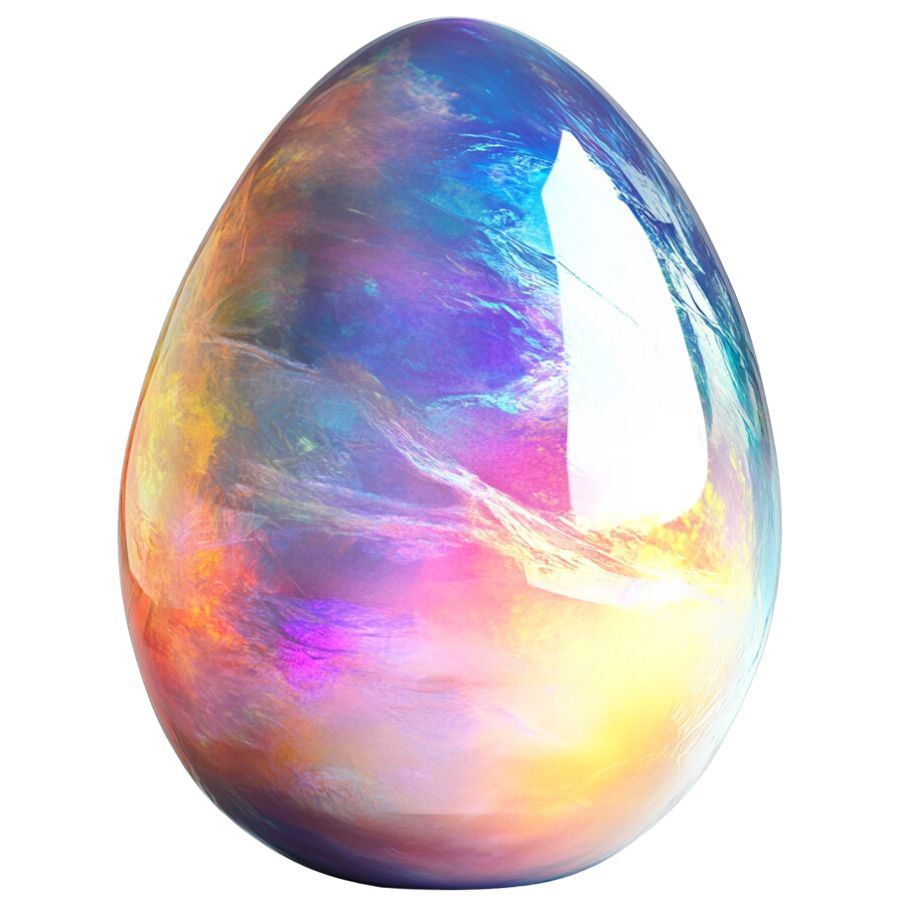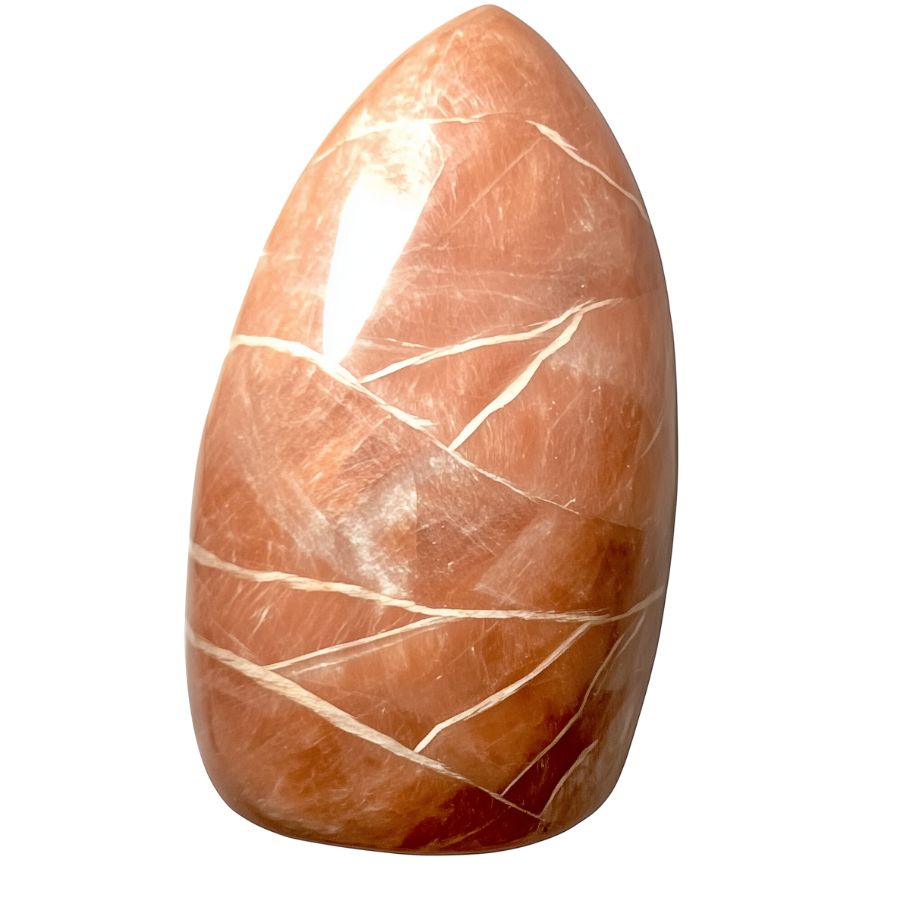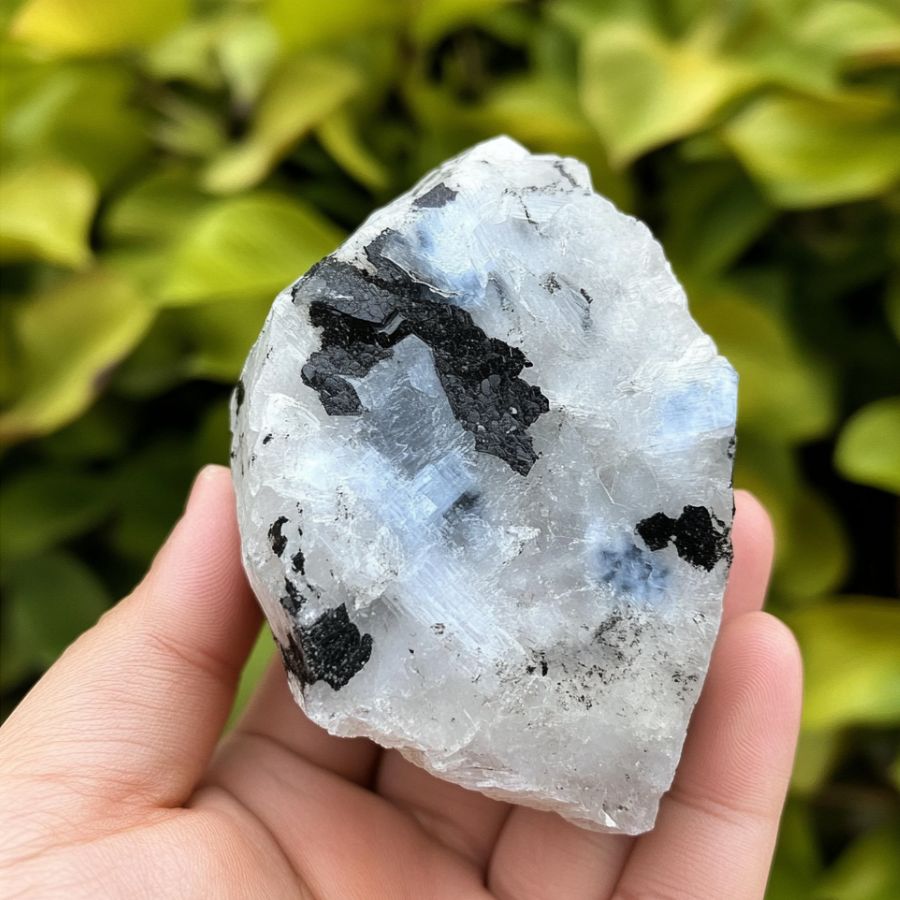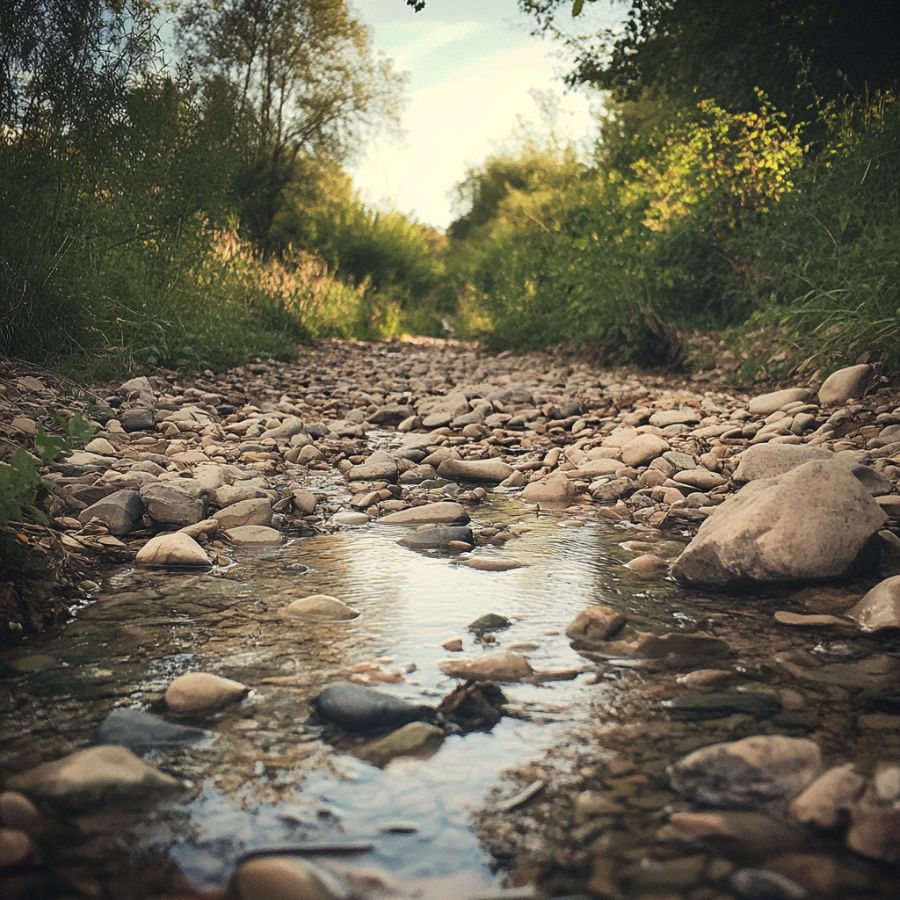From the Colorado border in the north to Texas in the south, and from Arizona in the west to Oklahoma and Texas in the east, New Mexico offers a vast landscape for moonstone enthusiasts.
However, many rockhounds struggle to find reliable spots for these gems, often wasting time and energy.
We understand this frustration. That’s why we’ve compiled the best locations to find moonstones in the Land of Enchantment.
Our carefully researched list will save you countless hours of searching. We’ll guide you to the most promising sites, ensuring your moonstone hunt is both efficient and rewarding.
How Moonstone Forms Here

Moonstone starts as feldspar, a mineral made of aluminum and silicate. As the rocks cool slowly, two types of feldspar—orthoclase and albite—separate into thin layers. As the layers solidify, they create the stone’s unique internal structure.
The stone’s color, usually milky white with a blue or peach glow, depends on the thickness of these layers and how they catch the light.
When light enters the stone, it scatters between these layers, producing a moonstone’s signature shimmering glow called adularescence. This optical effect makes it appear as if light is floating beneath the surface.
Over millions of years, plate tectonics push the moonstone deposits closer to the surface where they can be mined. The rarity and specific geology needed to create moonstones add to their mystique as one of the world’s most magical gemstones.
The Types Of Moonstone
Our state is a treasure trove of stunning moonstone varieties. These natural wonders come in various forms, each with its own unique charm and allure:
Blue Moonstone

Blue Moonstone is known for its transparent to translucent body with a floating blue sheen on the surface. This sheen, called adularescence, is caused by light reflecting off layers of minerals within the stone.
The most prized Blue Moonstones have a strong blue color and perfect clarity. This makes them stand out from other types, which might be colorless or milky.
What’s special about Blue Moonstone is its ethereal glow. The adularescence creates a soft, shimmering light beneath its surface. This unique optical effect, combined with its rarity, makes it popular among collectors and jewelry enthusiasts.
Rainbow Moonstone

Rainbow Moonstone is famous for its labradorescence, a colorful sheen that shows a spectrum of colors like blue, yellow, orange, and purple. This effect is especially striking against its white body color, giving it a radiant appearance.
Unlike traditional moonstones, Rainbow Moonstones’ play of colors is more vivid and varied. It’s often confused with labradorite but can be distinguished by its pearly sheen and more transparent body.
Some Rainbow Moonstones contain inclusions of black tourmaline, visible in untreated stones. This gemstone gained popularity during the Art Nouveau period and continues to be favored in modern jewelry for its unique optical effects.
Pink Moonstone

Pink Moonstone shows a delicate pink or peach hue, ranging from honey to beige. Its color is soft and subtle, setting it apart from other moonstones with more vibrant shades.
This stone has a pearly or vitreous luster and is generally translucent. High-quality Pink Moonstones often display a white sheen on the surface. Some specimens can even show a cat’s eye or star effect due to their unique internal structure.
Pink Moonstone is one of the rarest varieties of moonstone. Its delicate color and unique optical effects make it highly sought after. Unlike Pink Opal, which is more opaque, Pink Moonstone is characterized by its iridescent sheen.
Star Moonstone

Star Moonstone shows a unique optical effect called asterism, creating a four-pointed star pattern on its surface. This happens because of needle-like inclusions in the stone that reflect light in a special way.
These moonstones are usually translucent to opaque, with colors ranging from colorless to shades of blue, gray, or white. The star effect is best seen when the stone is cut into a cabochon shape.
Star Moonstone is rarer than other types, making it highly desirable. The strongest and most well-defined stars are often found in specimens from Sri Lanka.
Peach Moonstone

Peach Moonstone stands out with its soft peach or orange hue, ranging from pale to more intense shades. It has a shimmering effect called adularescence, which creates a glowing appearance under certain light.
Unlike other moonstones, Peach Moonstone’s glow is more subdued and warm-toned. It’s generally translucent to semi-transparent, allowing light to pass through and enhance its beauty.
What’s special about Peach Moonstone is its rarity. This scarcity makes it desirable among collectors and jewelry makers.
Its warm tones are particularly favored in designs aiming for a soft, romantic look. The unique color and rarity of Peach Moonstone set it apart in the world of gemstones.
Brown Moonstone

Brown Moonstone has a warm, earthy color that ranges from light honey to deep chocolate brown. It’s translucent to opaque and shows the typical moonstone glow, caused by light scattering between layers of different minerals inside the stone.
What makes Brown Moonstone unique is its rarity compared to other colors like white, gray, and rainbow. The brown color comes from iron impurities in the stone.
Brown Moonstone doesn’t show a strong play of color or iridescence like other moonstones. Its subtle beauty lies in its rich, earthy tones and soft glow. This makes it a distinctive choice for those who appreciate understated elegance in their stones.
Cat’s Eye Moonstone

Cat’s Eye Moonstone is known for its striking appearance. It has a translucent body with a narrow band of light that moves across the surface, looking like a cat’s eye. This effect, called chatoyancy, is caused by tiny needle-like inclusions in the stone.
What sets it apart from other moonstones is this cat’s eye effect. While other moonstones might have a blue sheen, Cat’s Eye Moonstone is all about this moving line of light.
The chatoyancy in Cat’s Eye Moonstone is highly sought after. It’s more valuable than standard moonstones because of how rare it is to find high-quality pieces with strong chatoyancy. This unique look makes it a favorite among collectors and stone enthusiasts.
Green Moonstone

Green moonstone captivates with its soft, pastel green hue and subtle white sheen. Unlike other moonstones, it often displays a velvety texture that’s pleasing to both eye and touch.
Each green moonstone is unique, with color variations ranging from faint green streaks to more pronounced green hues within a milky white base. This diversity means no two stones look exactly alike.
The stone’s green color comes from its high nickel content, making it a rarer find in the moonstone family. This unique composition sets it apart and makes it a favorite among collectors who appreciate its distinctive appearance.
What Rough Moonstone Looks Like
It’s important to understand what a rough moonstone looks like to know what you’re looking for. Here are a few things to keep an eye for:
Check for a Glassy or Waxy Luster

Look for a shiny surface. Moonstone usually has a glassy or waxy luster. It might not sparkle like a diamond, but it has a soft glow.
Hold it up to the light and see if it catches a gentle sheen. If you spot that smooth, silky look, you might have found one.
DON'T MISS OUT ON ANY GREAT FINDS!
While you're out searching for Moonstone you're going to find a lot of other interesting rocks and minerals along the way. The last thing you want to do is toss out something really interesting or valuable. It can be easy to misidentify things without a little guidance.
We've put together a fantastic field guide that makes identifying 140 of the most interesting and valuable rocks and minerals you will find REALLY EASY. It's simple to use, really durable, and will allow you to identify just about any rock and mineral you come across. Make sure you bring it along on your hunt!
Assess the Density and Weight

Moonstone feels relatively light for a gemstone. If you pick it up and it feels heavier than expected, it might not be moonstone.
The specific gravity ranges from 2.54 to 2.66, so it should feel somewhat light in your hand.
Notice the Blue or White Sheen

Tilt the stone in your hand. If you notice a blue or white sheen, that’s a good sign. Moonstone has something called adularescence. This is when light reflects inside the stone, creating a soft glow.
It’s one of the key features of moonstone, so keep an eye out for that flash of color.
Look for Rounded Edges

Notice the edges. Moonstone tends to have rounded edges, not sharp ones. This is due to the way it forms in nature.
The rounded shape makes it easier to spot when you’re searching. Keep an eye out for stones with soft, curved edges.
A Quick Request About Collecting
Always Confirm Access and Collection Rules!
Before heading out to any of the locations on our list you need to confirm access requirements and collection rules for both public and private locations directly with the location. We haven’t personally verified every location and the access requirements and collection rules often change without notice.
Many of the locations we mention will not allow collecting but are still great places for those who love to find beautiful rocks and minerals in the wild without keeping them. We also can’t guarantee you will find anything in these locations since they are constantly changing.
Always get updated information directly from the source ahead of time to ensure responsible rockhounding. If you want even more current options it’s always a good idea to contact local rock and mineral clubs and groups
Tips on Where to Look
When you reach the places we’ve listed below, keep these things in mind while searching:
Riverbeds and Streams

Check out riverbeds and streams. Moonstones can often be found in these areas.
They wash down from the mountains and settle in the gravel. Search along the edges, especially after heavy rain. It’s an easy way to start.
Sandy Beaches

Head to sandy beaches. Look where the sand meets rocks or pebbles. The constant movement of the water helps uncover hidden treasures.
You might find moonstones mixed in with other small stones. The search here can be fun and rewarding.
Old Quarries

Visit old quarries. These places often have piles of loose rocks and gravel where moonstones might be hiding.
The digging and blasting might have already brought them to the surface. Just a little effort and you might find something cool.
Sedimentary Rocks

Check sedimentary rock areas. Moonstones form in these rocks, so they’re likely to be around.
Look for outcroppings or places where the rocks have broken apart. The stones might be easier to spot after some weathering.
The types of Moonstone can you find around the state
New Mexico is known for its unique varieties of moonstones, primarily pink moonstones and star moonstones.
Pink moonstone features a soft, rosy hue that can range from pale to deeper shades, often exhibiting a gentle sheen that enhances its beauty.
Star moonstone is distinguished by its captivating asterism—a phenomenon where a star-like pattern appears on the surface when viewed under direct light. This effect is created by inclusions within the stone and gives it a striking appearance, making it highly sought after by collectors and jewelry enthusiasts alike.
Both types of moonstones from New Mexico reflect the region’s geological diversity and are cherished for their unique characteristics in the world of gemstones.
Some Great Places To Start
Here are some of the better places in the state to start looking for moonstones:
Always Confirm Access and Collection Rules!
Before heading out to any of the locations on our list you need to confirm access requirements and collection rules for both public and private locations directly with the location. We haven’t personally verified every location and the access requirements and collection rules often change without notice.
Many of the locations we mention will not allow collecting but are still great places for those who love to find beautiful rocks and minerals in the wild without keeping them. We also can’t guarantee you will find anything in these locations since they are constantly changing.
Always get updated information directly from the source ahead of time to ensure responsible rockhounding. If you want even more current options it’s always a good idea to contact local rock and mineral clubs and groups
Rabb Canyon

Nestled in the southwestern corner of New Mexico, Rabb Canyon in Grant County is a hidden gem for moonstone enthusiasts.
This scenic valley, with an elevation of about 6,467 feet, offers more than just breathtaking views. It’s a treasure trove for rockhounds, especially those seeking the ethereal beauty of moonstone.
The canyon’s geological makeup is a rockhound’s dream. Pegmatite formations, known for hosting rare minerals, are scattered throughout the area. These coarse-grained igneous rocks are the primary source of moonstone here.
Moonstones can be found along the trail within Rabb Canyon. Specifically, small moonstone rocks are often visible on the surface, especially around the remnants of the old moonstone mine.
Exploring off-path areas and near rock formations can increase the chances of finding moonstone
Rabb Canyon’s allure extends beyond moonstones. The area boasts slick rock formations and hidden springs, adding to its natural charm. While exploring, you might stumble upon other minerals too.
Little Hatchet Mountains

The Little Hatchet Mountains are located in the southwestern part of New Mexico. This range lies between the Hachita Valley to the east and the Playas Valley to the west.
The area’s igneous rock formations, particularly the pegmatites, are rich in moonstone deposits. These beautiful gems can often be spotted glinting in the sunlight along exposed rock faces and in loose gravel near the mountain slopes.
The Little Hatchet Mountains are also known for their diverse mineral content, including silver and copper, which were historically mined in the area, making it a prime spot for rockhounds of all interests.
Within the Little Hatchet Mountains, moonstones can typically be found in areas where there are exposed rock formations and mineral veins.
Rockhounding enthusiasts often search near old mining sites and natural outcrops where erosion has revealed underlying mineral deposits.
Jemez Mountains

The Jemez Mountains are a volcanic mountain range located in north-central New Mexico, north of the Albuquerque Basin.
This volcanic range, part of the Rio Grande Rift, is home to the massive Valles Caldera, one of Earth’s largest young calderas. Formed 1.2 million years ago, it’s a testament to the area’s fiery past.
Moonstone hunters will find a treasure trove here, thanks to the diverse geological makeup. The mountains’ rhyolite and dacite formations are prime spots for uncovering these lustrous gems.
As you explore, keep an eye out for the Bandelier Tuff, a unique rock formed from volcanic ash. The area’s hot springs add another layer of intrigue, hinting at the geothermal activity still bubbling beneath the surface.
With Chicoma Mountain towering at 11,562 feet, the Jemez range offers both challenging terrain and rewarding finds for gemstone enthusiasts.
San Mateo Mountains Mining District

Nestled in the rugged terrain of Sierra County, the San Mateo Mountains Mining District is a hidden gem for rockhounds. This mountainous region, south of the Nogal Canyon caldera, boasts a rich geological history shaped by volcanic activity.
The district’s complex landscape is a testament to its fiery past, with rhyolite and tuff formations scattered throughout.
Moonstone hunters will find this area particularly exciting. The volcanic rocks and hydrothermal processes have created ideal conditions for the formation of this enchanting gemstone.
Look for moonstones in areas where rhyolite is abundant, especially near the remnants of old volcanic vents.
The district’s unique geology also offers opportunities to discover other minerals. Keep an eye out for quartz crystals and various forms of chalcedony, which are often found alongside moonstones in these volcanic environments.
Los Pinos Mountains

The Los Pinos Mountains stretch about 15 miles in central New Mexico. It is known for its steep western faces and gentler eastern slopes. The mountains are part of a larger front that includes the Sandia and Manzano ranges.
What makes Los Pinos special for rockhounds is its diverse geology. The western side features the Los Pinos pluton, a massive igneous intrusion around 1.655 billion years old.
This ancient formation, coupled with exposed Precambrian rocks and Paleozoic sedimentary beds, creates an ideal environment for moonstone formation.
Moonstone hunters should focus on the western ridge, where erosion has revealed underlying rock formations. The area’s normal and thrust faulting has created varied mineral deposits, making each expedition a potential discovery.
The Los Pinos Mountains not only offer gemstone opportunities but also stunning views of the New Mexico landscape, making it a rewarding destination for both novice and experienced rockhounds.


